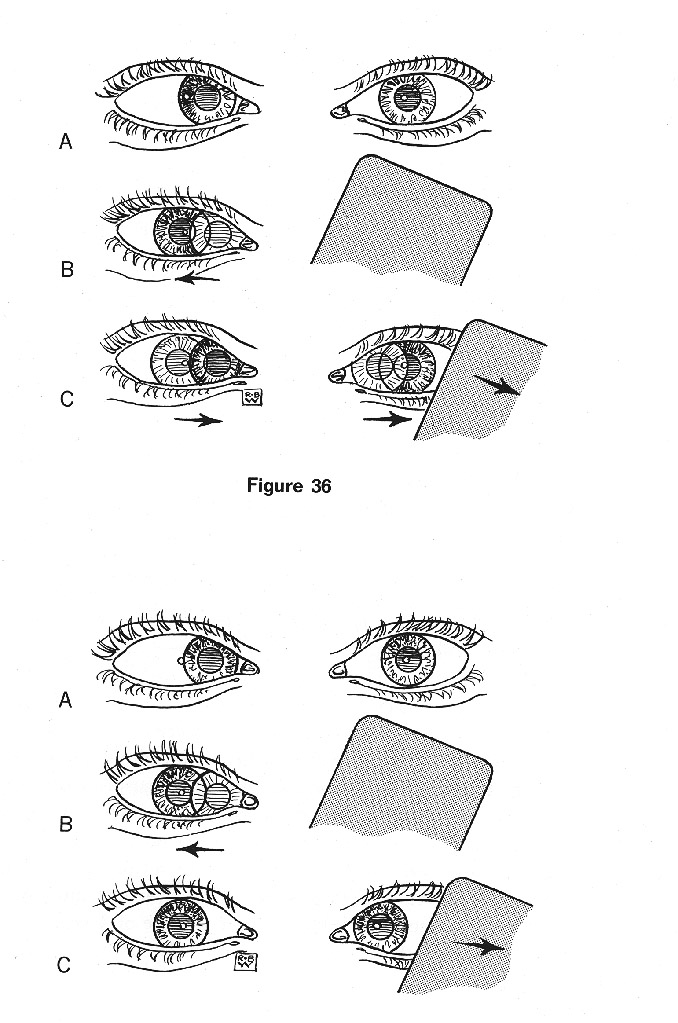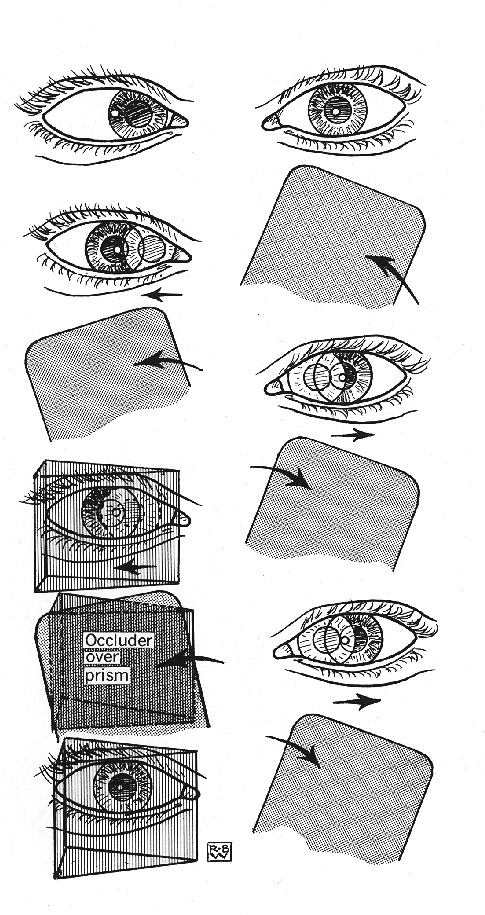INTRODUCTION TO
STRABISMUS

EPIDEMIOLOGY
2-4% of the general population
National Health Survey 1971-1972
overall, 1-74 year olds, 3.7%
prevalence
esotropia 1.2%
exotropia 2.1%
hypertropia 0.4%

STRABISMUS MYTHOLOGY
- strabismus will go away
- strabismus is caused by weak
muscles
- most children are strabismic for a
time
- surgery is the only treatment
option
- surgery is never a treatment
option
- strabismic amblyopia cannot be treated after
age 6

ETIOLOGIES OF STRABISMUS
|
CAUSE
|
PROPONENT
|
|
ACCOMMODATION
|
DONDERS / LANDOLT
|
|
PARETIC MUSCLE
|
SNELLEN
|
|
MECHANICAL RESTRICTIONS
|
BIELSCHOWSKY
|
|
LACK OF SENSORY FUSION ABILITY
|
WORTH
|
|
DEFICIT IN OPTOMOTOR REFLEXES
|
CHAVESSE / KEINER
|
|
ANOMALY OF CON / DI-VERGENCE
|
DUANE
|
|
NEARPOINT DISORDER
|
SKEFFINGTON
|
|
PSYCHOLOGICAL
|
MANY
|

STRABISMUS HISTORY
- HPI - history of the present illness
- clinical course
- previous diagnoses and treatments
- examinations
- refractive correction
- treatment of amblyopia
- surgery
- vision therapy
- age of onset, aka duration of
condition
- type of onset
- past family history

STRABISMUS DIAGNOSIS
- observation
- Hirschberg
- cover test
- cover test
- cover test
- cover test
- cover test
- cover test
- cover test
- cover test
- cover test
- occasionally a specialized test for a very
small angle esotropia


OBJECTIVES OF STRABISMUS DIAGNOSIS
Is strabismus present?
If so:
- frequency
- eye dominance
- magnitude
- consistency
- distance vs near
- gaze direction
- amblyopia
- anomalous correspondence
- suppression
What is the management decision?

CLASSIFICATION OF STRABISMUS
- direction
- horizontal
- vertical
- cyclo
-
- laterality
-
- frequency
- constant
- intermittent
- periodic
- cyclic
-
- fixation distance
- distance
- near point
- intermediate
-
- magnitude
- objective angle
- actual amount of eye turn
- subjective angle
- how much the patient thinks the eye is
turned
- is usually smaller, if different from
objective angle
- a significant difference indicates
ARC

-
- comitancy
- comitant
- noncomitant
- primary angle
- strabismic angle with "good" eye
fixating
- secondary angle
- strabismic angle with the "paretic"
eye fixating
-
- time of onset
- congenital
- infantile
- childhood
- acquired

![]()
![]()
![]()
![]()
![]()
![]()
![]()
![]()